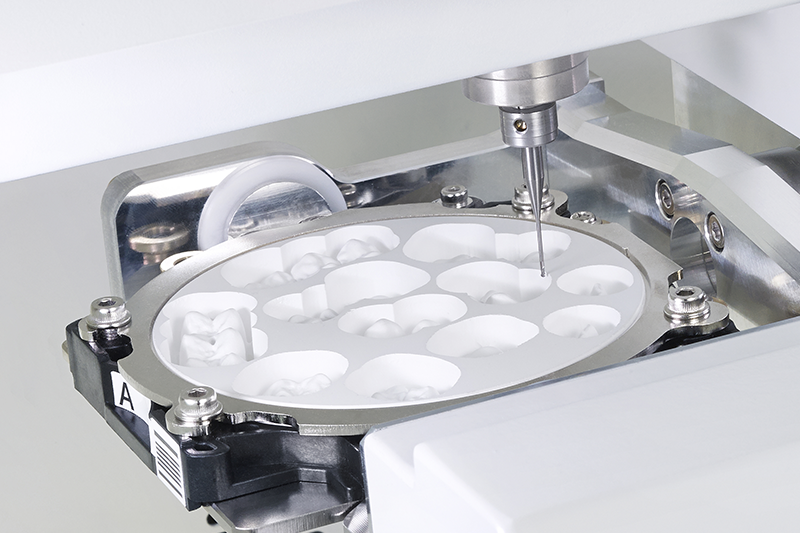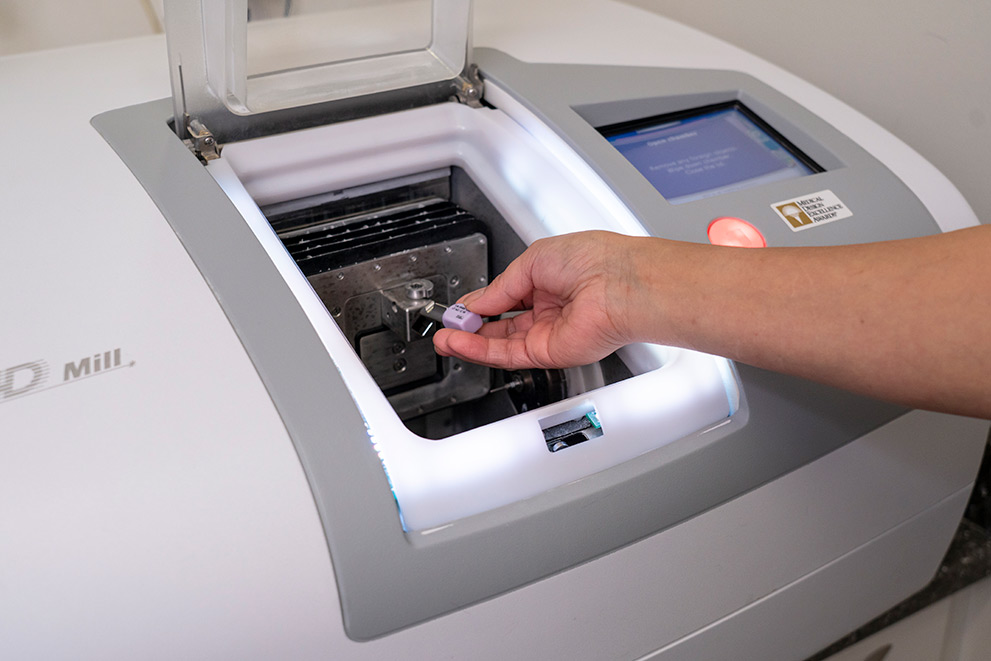

Once the final restoration is designed, the crown, inlay, onlay, veneer or bridge is milled from a single block of ceramic material in a milling chamber. Some cases could take minutes, while others could require a half-hour or more of design time to ensure quality. The amount of time it takes for a dentist, in-office restoration designer or laboratory technician to design a restoration varies based on skill, experience, and complexity of case and treatment.
#Cad cam machine dental software#
The dentist or laboratory technician then uses those 3-D images and CAD software to draw and design the final restoration. Alternatively, the 3-D images can be obtained by scanning a traditional model obtained from conventional impressions of the preparations. The CAD/CAM computer displays a 3-D custom image of your prepared tooth or teeth obtained by digitally capturing the preparations with an optical scanner. In-Office and Dental Laboratory CAD/CAM Optionsĭental CAD/CAM technology is available for dental practices and dental laboratories, enabling dentists and their staff (or a laboratory technician) to design restorations on a computer screen. Today’s CAD/CAM restorations are better-fitting, more durable and more natural looking (multi-colored and translucent, similar to natural teeth) than previously machined restorations. Dental CAD/CAM also is used to fabricate abutments for dental implants, used to replace missing teeth.Īs the materials and technology available for CAD/CAM dentistry have improved over the years, so too have the restorations that patients can receive from this form of digital dentistry. Used for decades in the manufacturing industry to produce precision tools, parts and automobiles, CAD/CAM technology has been increasingly incorporated into dentistry over the past 20 years.ĬAD/CAM technology and metal-free materials are used by dentists and dental laboratories to provide patients with milled ceramic crowns, veneers, onlays, inlays and bridges. Be sure to ask about your options and the associated costs.Shaping Dentistry with CAD/CAM TechnologyĬAD/CAM is an acronym for computer-aided design/computer-aided manufacturing. CAD/CAM technology eliminates several outsourcing costs for your dental professional, and these savings may be passed onto the patient. A scanner is placed in the patient's mouth with digital impressions and moved around the affected area - like waving a magic wand. The traditional method requires the patient to place a tray with a thick, gooey material - called alginate - in their mouth and hold for two to five minutes until the material sets. If you've ever had a conventional impression, you immediately understand the benefits of a digital system.
#Cad cam machine dental professional#
With CAD/CAM technology, the dental professional can sometimes complete all these steps in a single visit, allowing for fewer disruptions in your schedule. Using traditional laboratory methods, your dentist or prosthodontist would prepare your tooth, make an impression, and send the impression to a lab to create the final restoration. Some of the significant advantages include: The use of CAD/CAM technology provides benefits not only for dental professionals but also for patients. Still, CAD/CAM requires less time and effort than traditional laboratory methods.

This whole process could take anywhere from 45 minutes to two hours, depending on the case's complexity. Finally, the restoration is permanently placed in your mouth to complete your smile. The restoration is stained or glazed to look more natural before being polished. Next, a milling machine takes the design and shapes the crown, veneer, inlay, onlay, or bridge from a single block of ceramic. With those 3D images, the dental professional will use the CAD software to design the final restoration. Next, an optical scanner will digitally capture the tooth preparation and surrounding teeth to create a 3D custom image. Your dental professional will prepare the site for your restoration by removing all decay or portions of the structurally unsound tooth. Here's what to expect from a restoration procedure using CAD/CAM.

Both dental practices and laboratories use CAD/CAM technology to construct restorations like crowns, inlays, onlays, veneers, bridges, dentures, and implant-supported restorations from high-strength ceramic. Understanding Digital Dentistry and the CAD/CAM ProcessĬAD/CAM dentistry describes the software that makes it possible for dental professionals to perform complex restorations faster, more efficiently, and sometimes more accurately.


 0 kommentar(er)
0 kommentar(er)
